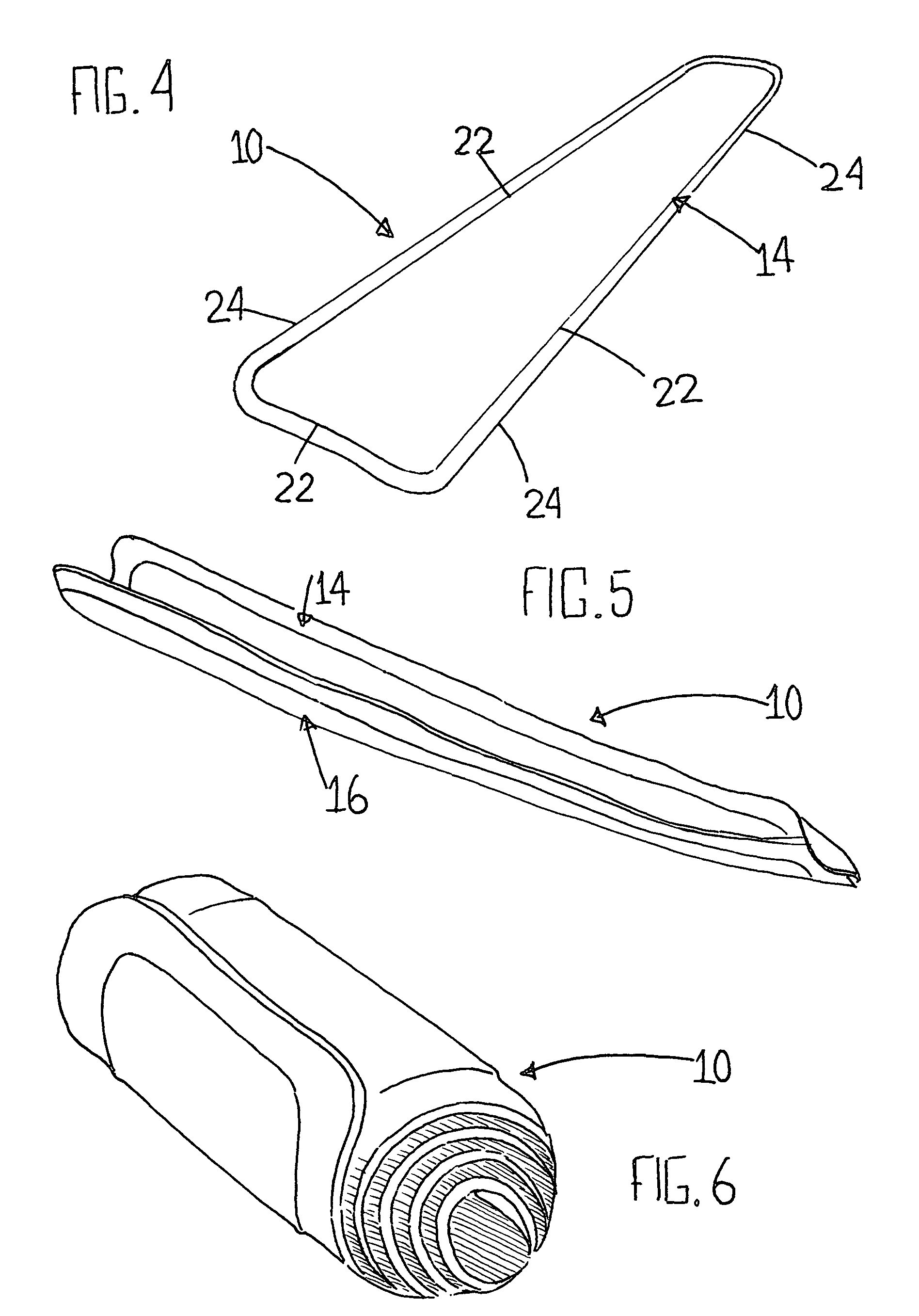Three-part laminated pliable hand-moldable surface construction
a pliable, three-part technology, applied in the direction of closure using stoppers, liquid handling, nuclear elements, etc., can solve the problems of difficult to easily change the shape of the device, difficult to easily change the size of conventional oil draining devices, and difficult to purchase smaller and larger devices
- Summary
- Abstract
- Description
- Claims
- Application Information
AI Technical Summary
Benefits of technology
Problems solved by technology
Method used
Image
Examples
Embodiment Construction
[0056]Turning now descriptively to the drawings, in which similar reference characters denote similar elements throughout the several views, there is shown a three-part laminated pliable hand-moldable surface construction 10 (see FIG. 4 for an overall perspective) which comprises three main layers. The center layer of the surface construction 10 is a pliable hand-moldable sheet of lead designated as item 12 (see FIGS. 1-3), both sides of which are covered with an appropriate pliable material layer 14, 16 such as thin rubber. This configuration establishes a three part laminated hand-moldable and pliable surface construction 10 which can be manually shaped to a desired configuration, optionally cut to a desired size, and is adaptable for many purposes, including but not limited to channeling the flow of liquid from one location to another, and forming a protective cover over exposed jagged edges.
[0057]More particularly, the middle layer of the surface construction 10 is a sheet of le...
PUM
| Property | Measurement | Unit |
|---|---|---|
| thickness | aaaaa | aaaaa |
| size | aaaaa | aaaaa |
| shape-retention | aaaaa | aaaaa |
Abstract
Description
Claims
Application Information
 Login to View More
Login to View More - R&D
- Intellectual Property
- Life Sciences
- Materials
- Tech Scout
- Unparalleled Data Quality
- Higher Quality Content
- 60% Fewer Hallucinations
Browse by: Latest US Patents, China's latest patents, Technical Efficacy Thesaurus, Application Domain, Technology Topic, Popular Technical Reports.
© 2025 PatSnap. All rights reserved.Legal|Privacy policy|Modern Slavery Act Transparency Statement|Sitemap|About US| Contact US: help@patsnap.com



